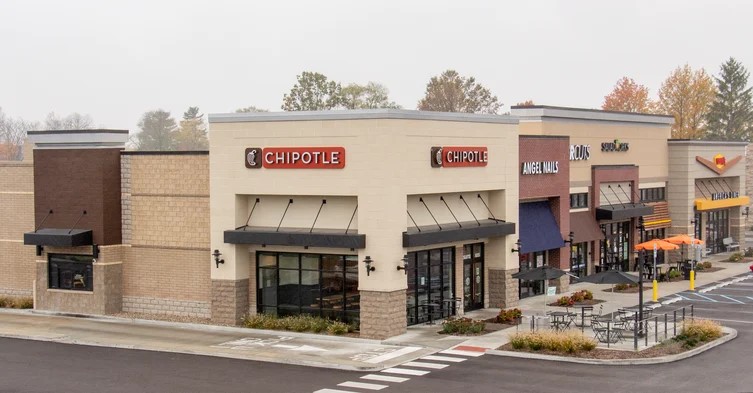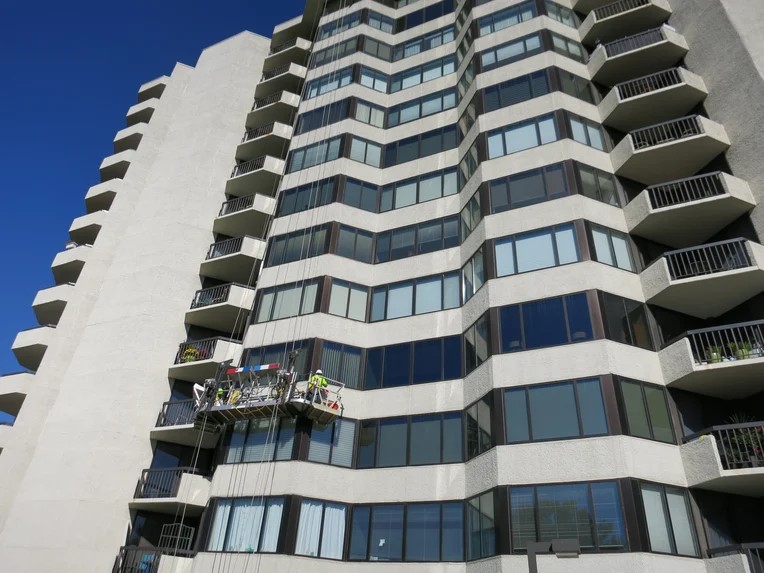Posted by Al Zabbo
When selecting materials for new construction, oftentimes, the choice for cladding comes down to using popular options like Exterior Insulation and Finish Systems (EIFS) or stucco.
To the casual observer, these two building materials might appear the same. However, there are several key differences that exist between the two that are crucial for architects and builders to know.
Let’s dive in to discover the actual differences between EIFS and stucco and determine which is the best option for your project.
Where did EIFS and Stucco Originate?

EIFS, sometimes regarded as a “synthetic stucco,” was developed in Germany shortly after WWII and used to retrofit masonry walls. Because it provides continuous insulation, EIFS became popular as a means of retrofitting uninsulated structures without inconveniencing tenants or visitors.
By the late 1970s, EIFS became a widely used material for commercial buildings in the U.S. They gained additional popularity with the professional community as a way to meet the regulations around controlling the energy efficiency of commercial buildings.
Stucco has been the time-tested exterior plaster for thousands of years, dating back to Ancient Rome and Greek cultures. The earliest versions of stucco were well-known for being extremely durable and waterproof. Stucco gained popularity in the U.S. during the 19th Century, most often being referred to as “plaster” and was primarily used on residential buildings and small commercial structures.
How are Stucco and EIFS Applied?
EIFS

EIFS is made from sheets of rigid insulation board, adhesively or mechanically applied to an approved substrate or sheathing to provide an uninterrupted thermal barrier. First, a fluid-applied air and water-resistive barrier is applied to the substrate to provide a control layer for the management of both liquid and vapor moisture and air leakage.
The next layer consists of a insulation protected by scalable, fiberglass reinforced mesh, available in various weights per sq. yard, that’s embedded in an acrylic, cementitious base coat. The final, outer layer is an acrylic coating, which has nearly
unlimited colors and textures and provides an architectural finish.
Stucco
The materials used to develop stucco can usually be sourced locally, which helps with sustainability and transportation concerns. Stucco can be formed from the following substances. The amount of each ingredient depends on the type of coating being made:
- Portland cement
- Sand
- Lime
- Water
- Polymers (if increased flexibility is needed)
- Fiber (if more strength is needed)
Stucco is applied in numerous coats to achieve a set thickness, depending on the trim accessories used. Typically, it is applied in three coats over an expanded metal lath. It is frequently topped with an acrylic finish coat to minimize cracking and moisture absorption. This type of application can be labor-intensive with all the trim accessories used and requires specialized skills to complete the job.
The Pros and Cons of EIFS
Because EIFS is a complete system of layers and barriers, the advantages of EIFS far outweigh any disadvantages, especially when compared to stucco. Let’s take a closer look.
PROs of EIFS

- Low-Maintenance: EIFS rarely needs repainting and is easy to clean with a non-acidic cleaner. Proper selection of color and performance-enhancing additives will result in finishes highly resistant to ultraviolet sunlight or moisture damage, limiting the need for frequent recoating.
- Lightweight and Flexible: EIFS is 80% lighter than stucco at approximately 2 pounds per square foot The acrylic base-coat and finish layers allow for greater flexibility with deflection of L/240 thus reducing cracking typically found with stucco. EPS insulation can easily be cut into special shapes offering increased design options at greatly reduced cost.
- Durable: Improved durability from a variety of reinforcing meshes greatly increase the impact resistance of the system.
- Energy Efficient: EIFS provides continuous insulation, which prevents thermal bridging. It also has an R-value of 3 to 5 per inch compared to stucco’s R-value of .20. This level of insulation value can come with big cost savings for both residential and commercial buildings. When you combine this with insulation in the wall cavity, you can reach R-values of up to 16 or more.
- Low Air Infiltration: EIFS can minimize air infiltration by as much as 55% when compared to standard brick or wood construction. In addition, the integrated air barrier allows for conscientious management of air exchange and may save thousands in the reduction of required heating and cooling equipment.
- Peace of mind having a warrantable system.
CONS of EIFS
- Cost: The initial installation of EIFS can be more expensive than stucco. EIFS' cost varies greatly across the country.
The Pros and Cons of Stucco

Let’s review some of the reasons why stucco has remained a popular cladding option throughout the centuries, as well as some drawbacks that come with this type of material.
PROS of Stucco
- Affordability: Stucco is a more affordable option when compared to EIFS, with pricing that varies depending on if there is a union or non-union labor market.
- Easy Repairs: Although it should be cleaned and checked at regular intervals, stucco is known to be easy to maintain.
- Impact Resistance: Cement stucco offers improved impact resistance.
- Longevity: Stucco has been around for centuries.
CONS of Stucco
- Heavy Material: Stucco tends to weigh about 10 lbs/sq. ft., which can make the material difficult to work with and install.
- Control Joints: Stucco buildings require control joints every 144 sq. ft. to limit cracking. These joints are needed above every window and door corner, at floor lines, substrate changes and building expansion joint locations.
- Stucco Rule: The Stucco Rule states that no panel should have a length-to-width ratio greater than 2 ½ to 1 in any given panel. This can leave stucco open to be more vulnerable to cracking and experience thermal bridging.
- Color Instability: Though installed over a water-resistive barrier, the cement plaster is defined as a ‘reservoir substrate’ because it tends to absorb and hold water, which contributes to color instability. Stucco can also be difficult to color match, limiting its aesthetic appeal.
- Is not available as a warranted system.
EIFS is Worth the Investment
Overall, when you consider the maintenance, durability and energy-efficient aspects of EIFS, it is absolutely worth the investment long term. When installed correctly, EIFS meets or exceeds the same expectations that stucco is known for — without cracking and buckling.
Ready For Your Next Project?
No matter what solution you choose, Tremco is ready to help with your next EIFS or stucco project. Contact our team to get started today, and let us help you find the best cladding option for your next build.
About Al Zabbo
Al Zabbo is a Sr. Field Technical Representative for Dryvit. He has been in the construction industry for over 40 years and regularly hosts virtual and in-person trainings for those interested in learning how to properly install EIFS.